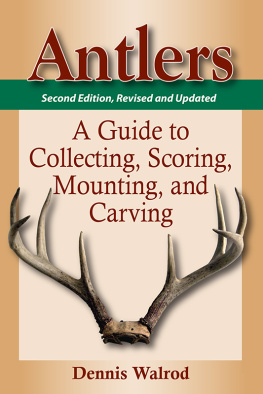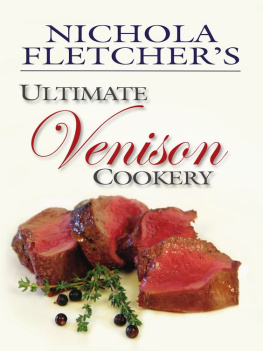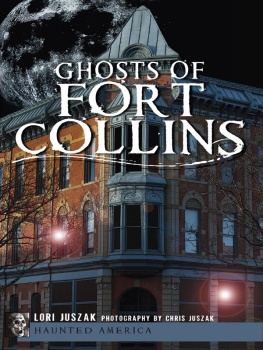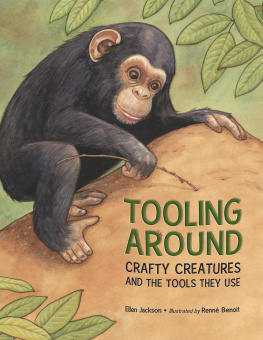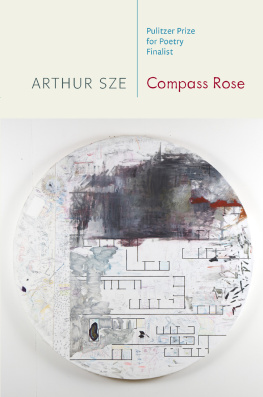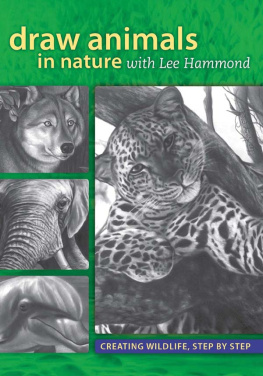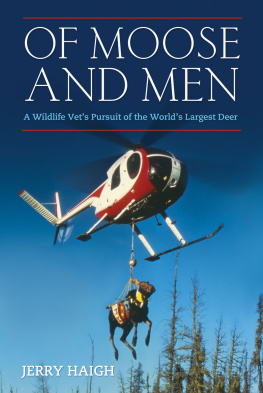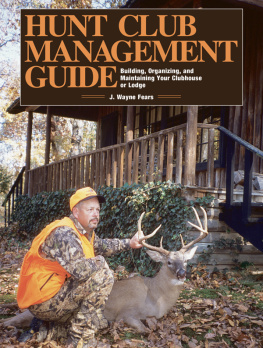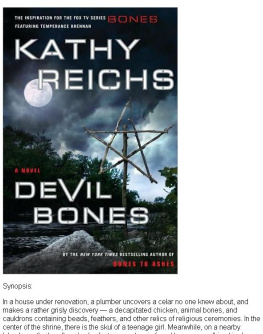Copyright 2010 by Dennis Walrod
Published by
STACKPOLE BOOKS
5067 Ritter Road
Mechanicsburg, PA 17055
www.stackpolebooks.com
All rights reserved, including the right to reproduce this book or portions thereof in any form or by any means, electronic or mechanical, including photocopying, recording, or by any information storage and retrieval system,without permission in writing from the publisher. All inquiries should beaddressed to Stackpole Books, 5067 Ritter Road, Mechanicsburg, Pennsylvania17055.
Printed in Singapore
First edition
10 9 8 7 6 5 4 3 2 1
Cover design by Tessa J. Sweigert
Cover photograph by Jim Roach
All photographs by the author except as follows: 5, 9, 11, 12, 17: Anthony Bubenik; 22:Brown Brothers; 24: Jim Roach; 26: Jackson Hole Chamber of Commerce; 33: www.antlerdesigns.com; 41, 49: Tammy Coleman; 42, 51: Doug Coleman; 54, 7577,171: Boone and Crockett Club; 57, 175, 184: Ohio Whitetail Hall of Fame; 97 (top andbottom): McKenzie Taxidermy Supply, Inc.; 108: Glen Conley; 110 (top and bottom):Larry Blomquist; 113: Gary Bowen; 119: Jack Brown; 130: Foredom Tool Company;131, 155: Larry Baesler; 144: Eric Carr; 156: Shane Wilson; 160: Stanley Hill
For more on antlers, hunting, and wildlife management, check out www.denniswalrod.com.
Library of Congress Cataloging-in-Publication Data
Walford, Dennis.
Antlers : a guide to collecting, scoring, mounting, and carving /Dennis Walford. 2nd ed., rev. and updated.
p. cm.
ISBN 978-0-8117-0596-7
ePub ISBN 978-0-8117-4214-6
1. Antlers. 2. Horn carving. 3. Bone implementsCollectors and collecting.
I. Title.
QL942.W35 2010
799.2'765dc22
2010004864
To Justin, Christopher, Ashlee, Ryan, Chelsea, Ethan, Solomon, Sophia, and Adalyn, who do not yet know who they are nor what they can become
ACKNOWLEDGMENTS
Wow, writing the acknowledgments for this book is tough work! Thereare so many significant contributors that I have to wonder whether justmy name or all of theirs together should appear under the title. Antlersis a book that wanted to be written ... or probably more accurately, thatall of these people wanted to be written, to serve as a central resourcefor their varied antler-related interests.
Several times, as my publication deadlines loomed, unexpectedinsights and information were revealed that required me to change thedirection the book was taking. I had just finished another book, Makingthe Most of Your Deer, when Brant Davis, owner of Wild Creations in Ellicottville, New York, told me that if I was truly interested in doing abook about antlers, I absolutely had to visit Lenny Nagel at his AntlerShed. So I did, and viewed thousands of whitetail antlers and learnedabout developments in their dollar value ... and if I didnt believe Len,I could look it up on eBay.
Well, I didnt, so I did. Look it up on eBay, that is, and thats where Imet Jack Brown, the Bonecarver, whom I later visited a hundredmiles down the pike in Wellsville, New York. In his antler store, Browntold me about the commissioned carving he was doing for DeerassicPark, a place in Ohio that I would have to see for myself. So I traveledthere to talk with Dean Ziegler, the founder of the National WhitetailDeer Education Foundation, the programs of which will influence theway many people will think about antlers in the future.
Somewhere along in there I did an online search for the possibleexistence of antler-related books like the one I wanted to write. I didntfind any, but I did locate an antler-science publication edited by Dr.George Bubenik of Ontario, Canada, whom I then asked for advice andhelp. Virtually all of the scientific observations and data that areincluded here were cheerfully provided by this world-renowned antlerresearcher, zoology professor, and M.D., or were published earlier byhis late father, Dr. Anthony Bubenik, who was an antler researcher andas you can see in the several illustrations by him that are in thisbooka talented artist. Larry Blomquist, editor of Breakthrough taxidermy magazine, supplied photos, procedures for making replicas ofantlers, and estimates of the current values of trophy antlers as graphedin Chapter 2. Which reminds me, thanks also to the Boone and CrockettClub, particularly the director of publications, Julie Houk, who provided me with access to the trophy database that I used to plot severalnational trends in antler size and type.
Contributing wildlife artists, including graphic artists, sculptors,artisans, and taxidermists whose works or techniques are displayed inthis book were Dr. Anthony Bubenik, Larry Baesler, Paul Blum, GaryBowen, Eric Carr, Glen Conley, Tim Ferrie, Wayne Henry, Russell Hill,Cole Johnson, Paul Luczah, Earl Martz, Evelyn Maryanski, Jack Paluh,Mat Snyder, Shane Wilson, and Bill Yox.
A method for training dogs to search for shed antlers was kindlyprovided by Tammy Coleman. Marilyn Erickson helped me numeroustimes to reconcile what I was trying to write with what I was actuallythinking. Mike Darr explained some of the shifts in deer habitat thathad occurred over time and that might have influenced trends in antlersize. Deer biologist Keith McCaffery steered me down a different fork inthe road just when I needed a fresh perspective on what this antler-culture phenomenon is all about, and where it might be going. Mostrecently, I thank editor Mark Allison and editorial assistant KathrynFulton, who put the final polish on this revised and updated secondedition.
INTRODUCTION
THE HUMAN FASCINATION WITH ANTLERS
Over the last ten years or so, a growing segment of the general publicincluding people who dont hunt, who have never seen a deer in thewild, or even who dont know that deer shed their antlers every yearhas gone absolutely nuts about antlers.
A new national organization, the Quality Deer Management Association, along with the wildlife management departments of severalstates, has begun promoting harvest guidelines designed to allow olderbucks to develop larger antlers, which has also increased interest in trophy-antler hunting while keeping the excessive whitetail populationunder control. The National Whitetail Deer Education Foundation,which also supports the Deerassic Park Education Center in Ohio,wisely uses the fascination that humans naturally have for antlers as acarrot on a stick to focus the interest of school children on nature andthe outdoors. Theres a rapidly growing enthusiasm among outdoorspeople who search the spring woodlands for antlers dropped in latewinter by live bucks, and now theyre organized under the NorthAmerican Shed Hunters Club, which provides an official measuringand recording system. An expression of a growing interest in trophyantlers can also be seen in the raw statistics of the Boone and CrockettClub, which has recorded far more high-scoring antler racks in the pastten years than during the entire twentieth century.
The Internet has had something to do with this by bringing peopleof common interests together ... and it hasnt hurt that eBay and othersites have provided balanced buyer-seller markets where the monetaryvalue of antlers can develop in the clear light of supply and demand.Some people cringe at the thought of the words money and antlersoccurring in the same sentence, as though there might be some cheapening of our interest in the outdoors and its wildlife. Its important toremember, though, that deer are a renewable source of antlers (especially shed antlers) and that the worst enemy of our environment and its wildlife is a simple lack of interest. In fact, the increased value inAmerica of antlers for carving and art stems in part from conservationefforts in Africa to protect the elephant population from poachers.Importation of ivory is now tightly controlled and no longer widelyavailable to artisans, so antler bone is now often substituted ... and anew art form has emerged, kept viable by online customers and art collectors with money in their pockets. The increased availability of shedantlers has also enabled and encouraged their use in the creation of rustic furniture and lighting fixtures that are suitable for certain high-endrestaurants and country chalets.
Next page
